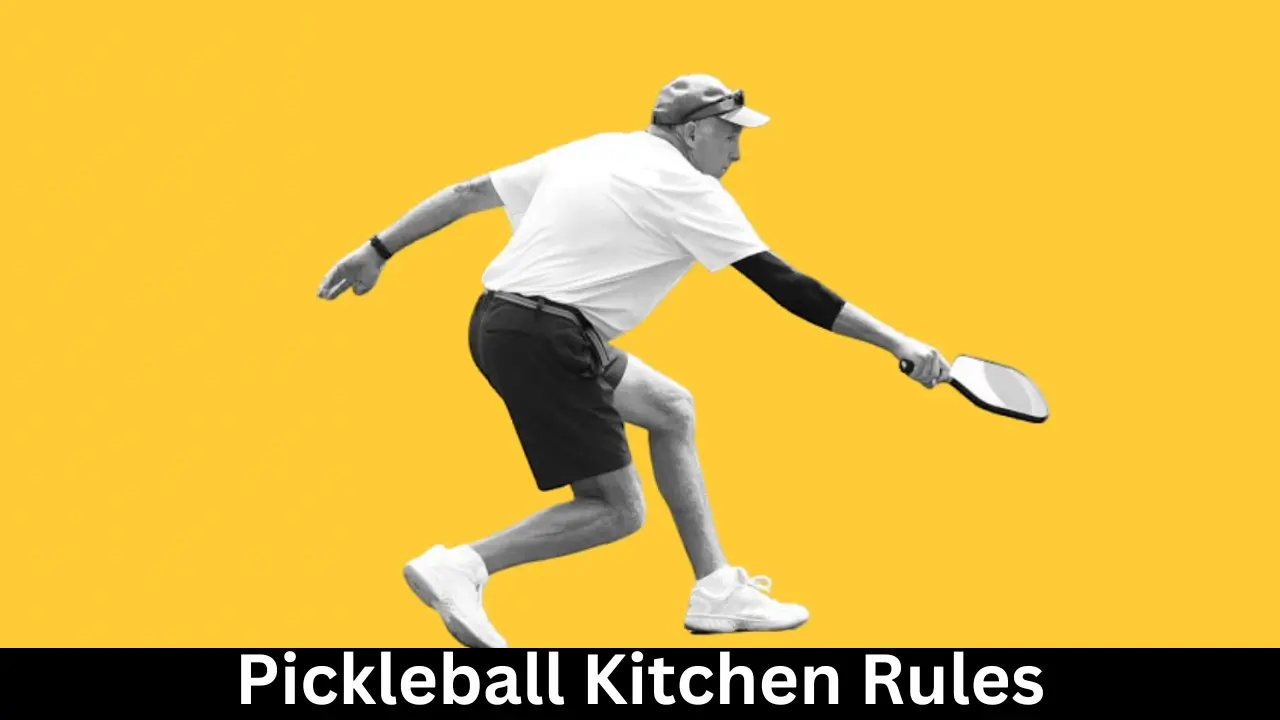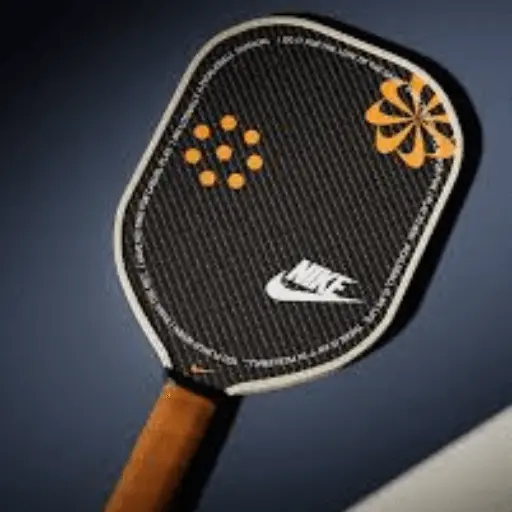New Updated Pickleball Kitchen Rules Of 2023- A Deep Explanation

Every beginner who wants to play pickleball must know the importance of the Pickleball Kitchen rules.
The kitchen, non-volley zone(NVZ) rule prohibits a pickler to touch its line or zone while volleying a ball. This rule doesn’t allow your partner and any objects physically connected to you. Further, when you volleyed a ball, your momentum threw you into the kitchen.

Summary
The kitchen rule states that:
1. A player can’t be permitted on the non-volley zone(NVZ), the kitchen line, or in the kitchen during the game.
2. A player’s body or any part that contact with it, including their partner in the non-volley zone(NVZ) or on its line, should not be permitted.
3. Players can’t toss the ball or touch the kitchen line with their swing, follow-through, or momentum.
A player must hit all volleys outside the non-volley zone, the kitchen. Players are not allowed to go into the non-volley area or touch the line when they volley the ball. The ball should bounce first before stepping into the non-volley zone(NVZ) to hit it. In the article we discuss pickleball kitchen rules in details.
Why is it called the Kitchen?
Pickleball has a combination of a few sports. No one is exactly sure where the term “kitchen” originated about the non-volley zone, but it has been suggested that it came from shuffleboard. Non-volley zone(NVZ), the kitchen is the “10-off” area in the shuffleboard.
If players try to land in this area, 10 points are deducted. Similarly, in pickleball, you don’t have permission to land in the kitchen. Regardless of how pickleball got its name, the kitchen rules are important in the game. Violating them will result in a fault. Stay out of the kitchen if you’re hitting, about to hit, or hitting a volley! To pickleball kitchen rules we’ve to highlight what is kitchen and its role in pickleball.
In pickleball, the kitchen is a famous word you listen to repeatedly. It is also known as the non-volley zone(NVZ). This area has a measurement of seven feet on both sides of the court net and goes to each sideline. These lines tell about the kitchen area. The kitchen is so well known because it’s one of the easiest rules to violate as a beginner, but also a unique rule uncommon in other racket sports. This rule forces people to stand at the net and hits everything downward.
Imagine if players were permitted to stand at the net during play, the game would be unplayable.
The credit goes to the kitchen rule. One of the most important features to know about the kitchen is the non-volley zone: the kitchen is the physical playground, not the space above it. You’re permitted to volley a ball while your paddle hovers over the kitchen zone, but you can’t if you physically touch the ground or its line.
By introducing a well-balanced movement system, this rule is designed to eliminate the hits you often see in other sports, like badminton, tennis, squash, or racquetball. A smash’s quick, hard hit puts the opposing team at an immediate disadvantage.
The non-volley zone was created, along with the “dink” hit, in which the ball is lobbed over the net as soon as it bounces inside or after the line, either from within or behind the kitchen zone. A “dink” rally can make a pickleball game very strategic and interesting.
5 Unique Pickleball Kitchen Rules Facts
These are the 5 unique pickleball kitchen rules fact:-
1. The kitchen is officially referred to as Non-Volley Zone (NVZ) but is more related to the kitchen.
2. The kitchen area is a seven feet deep area on both sides of the net that enhances the complete width of the court on both sides.
3. The kitchen has 2 inches thick, as are all pickleball court lines; they are part of the kitchen. This point is important to ponder.
4. The kitchen rule is an obstacle to stopping picklers from hitting the ball directly over the court net. Without it, a pickleball match or game would be impossible to play in a proper way and reasonably, permitting more than just hitting the ball over the court net and into your opposite player’s area.
5. The kitchen is on the ground, not the spaces above it. Having your paddle over the non-volley zone(NVZ) line while hitting a ball is legal, but you can’t contact the court line or stand inside the kitchen while doing so.
Pickleball Kitchen Rules in Details
You need to know a few pickleball kitchen rules to play and properly learn this game. It’s related to the kitchen area.
No Volleying
The straightforward rule of the kitchen is that it’s a non-volley zone. Within the non-volley zone area, no ball can strike out of the air. The ball should bounce once before it’s hit. Volleys can only be struck past the non-volley zone line, between that line and the court’s baseline. We should keep in mind the important and essential rule of no volley in the kitchen area.
Over-the-Line Rules
The non-volley zone line is considered part of the kitchen zone. Because of this, no foot can contact the kitchen line while volleying. If any part of the player contacts any part of the line, it will be a fault. Anything the player is wearing or carrying can’t reach or cross this area.
Due to this, even after the ball has been hit, the volley’s momentum and the pickleball racquet’s follow-through must not cause the player or racquet to cross the kitchen line. The speed of the volley must not take you into the kitchen zone when the ball is dead on your opponent’s side.
Partner Rules and Specifics
When volleying near the kitchen line, your partner can hold you back to keep you from crossing the kitchen line due to force. However, it will be considered a fault, even if you don’t cross the line, but something you’re wearing does. For example, a fault would be observed if the player’s cap fell off and landed in a specific zone.
Entering the Non-volley Zone
The kitchen, non-volley zone, can be gone at any time before a volley is not being hit. Groundstrokes may switch from the kitchen. If a player moves out of the kitchen, non-volley zone (NVZ) to hit a volley, both feet must place outside this specific zone before the ball is smashed from the air.
Remember that a volley can only hit after bounces twice – one bounce from the server and one from the return of the serve.
Important Terms of Pickleball
These are some important terms of pickleball to understand and learn properly and how these shots are strategically played in the kitchen:
1. Volleying
Volleying is a term that relates to striking or hitting the ball before bouncing.
2. Dinking
“Dinking” refers to bouncing the ball once over the net and then returning it.
A dink or lob (a soft shot used by experienced players over to land just beyond the net) is a vital technique of this game since it stops your partner from striking the ball back to your side. You can win more games and points by properly placing or dinking the ball to force the opponent into a tight vertical angle on their return shot.
3. Groundstroke
A shot hit that relates to following a bounce.
4. Erne
A prognostic shot where a pickler jumps or runs around the kitchen, non-volley zone(NVZ), to strike a fast-paced return. Generally, this technique is used to catch the opponent off-guard.
5. ATP
ATP means around the post; its shot is exactly like it seems. A pickler strikes the ball around the net and lands in the opponent’s court. It’s legal (and often exciting) and plays in pickleball.
Conclusion
To sum up, all the discussion here, To play a popular and fastest-growing sport, we should know the pickleball kitchen rules. These pickleball kitchen rules around the pickleball court kitchen area reflect the game’s most important aspects. The kitchen line is one of the most unique and reasonable aspects that make pickleball so unique as compared to other related paddle sports.
It’s no doubt one of the trickiest and most misunderstood rules. To master this rule, you must keep practicing it and focus on it constantly so that you don’t commit faults and lose games. Remember; always stay out of the kitchen. It is impossible to tell if the ball has bounced unless you know it has.
